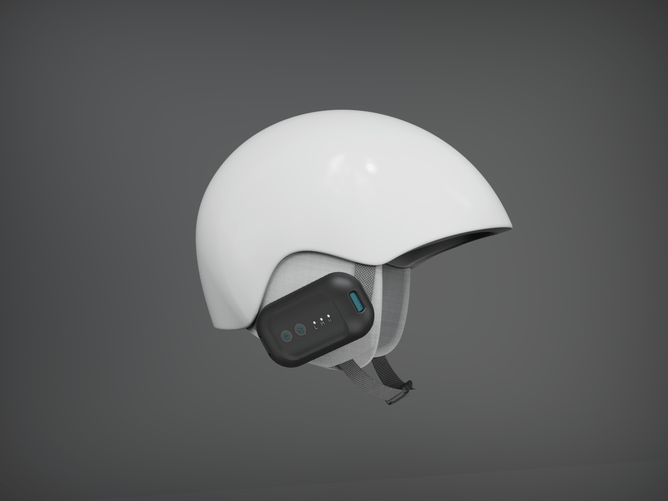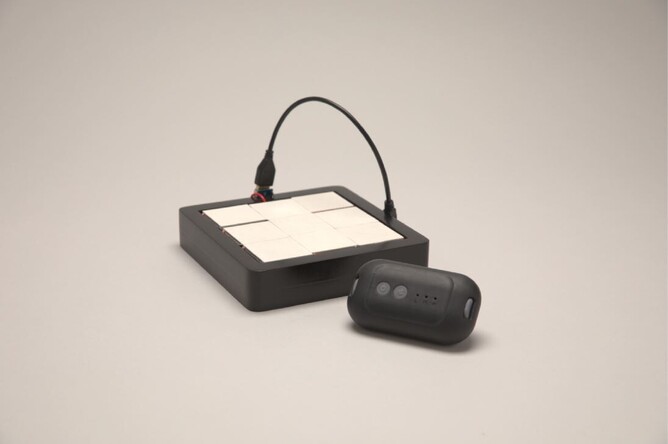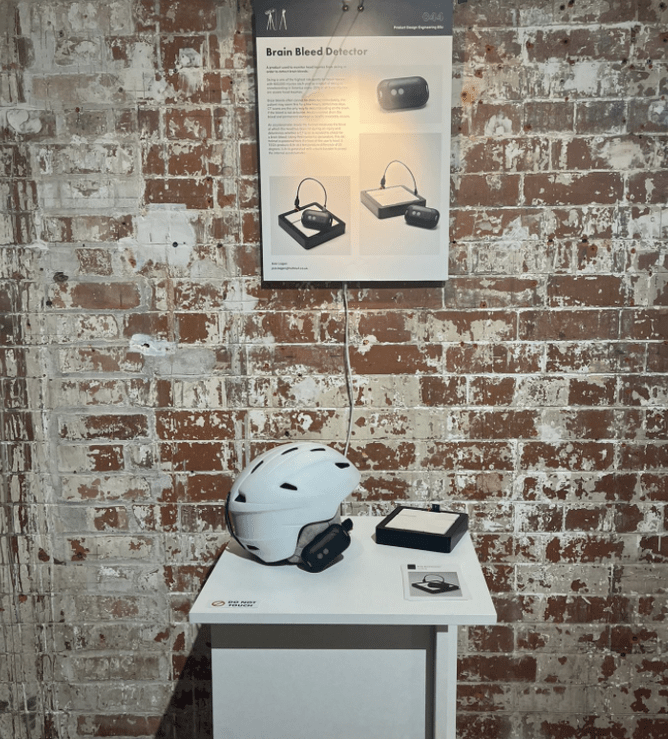Whether a beginner or expert, the experience of skiing and snowboarding is thrilling. Mastering turns and completing runs; the views, the exhilaration, the exercise. As with any sport played at speed, comes the risk of injury leading to some of the highest incidences of head injuries, with sadly many going undetected and leading to severe head trauma.
Patients can appear to have little or no symptoms for hours and in some cases for days after an accident. As a result, serious brain bleeds can be overlooked as they are hard to detect without a CT scan. The force of an impact can still cause brain damage whilst wearing a helmet but once detected, doctors can attend to injuries, drain the blood and prevent permanent damage or fatality.
Spotting the gap in the market, Design Engineer, Jess Logan has developed a device that could be used in real time to detect injuries and signal the need for urgent medical intervention. This year she has tested and developed a prototype which she is exhibiting at London's New Designers.
Current helmet safety standards are relatively archaic and testing uses mostly linear forces (it'll protect you if a rock falls on your head), whereas falls when skiing or snowboarding tend to involve a rotational force.
When a head hits something at high speed and then stops abruptly, today's helmets can do little to stop the brain bouncing around inside the skull (which causes the greatest damage) but detecting the severity of the impact and seeking treatment as soon as possible can be improved.
Powered by the body's heat
Jess was a recent Intern at The Imagination Factory and this year returned to Brunel University to complete her final project - developing the design for the early detection of brain bleeds, through this adapted helmet with the potential to save lives on the ski slopes.
The tech spec
An accelerometer on the helmet measures the force at which the head is hit during a crash and determine whether a CT scan is needed to check for a brain bleed.
Using sensors and thermoelectric generators embedded in the ski helmet the accelerometer is powered by the heat of the head, ensuring the vital data is available 24/7. Five Peltiers produce 0.9v at a temperature difference of 25 degrees. 3.3v is generated with a buck booster to power the accelerometer in the helmet.
Showcased in Central London
Internship support
"Having spent a year at The Imagination Factory as part of my placement year," said Jess,
"I was able to work collaboratively with them on my major project. They gave input towards electronics and provided the use of their workshops and 3D printers to make the final prototype.
During my placement year I worked on a range of projects and explored multiple technologies. This gave me the inspiration to choose a lesser explored technology like bio-energy harvesting (using waste energy from the human body to power low power devices) and use it to create a new product with a significant problem to solve for my major project."
"As a business we loved having Jess on the team during her internship. Her enthusiasm and inventive approach made it a joy to support her through her final year and we look forward to seeing her development as a designer," said Mark Hester, Co-Founder, The Imagination Factory.
We are extremely proud to share that Jess has been selected as one of this year's finest young design engineers, showcasing her work alongside the country's strongest designs at London's New Designers.
Visitors can get tickets for 6-9 July to see her work and others from across the UK.



